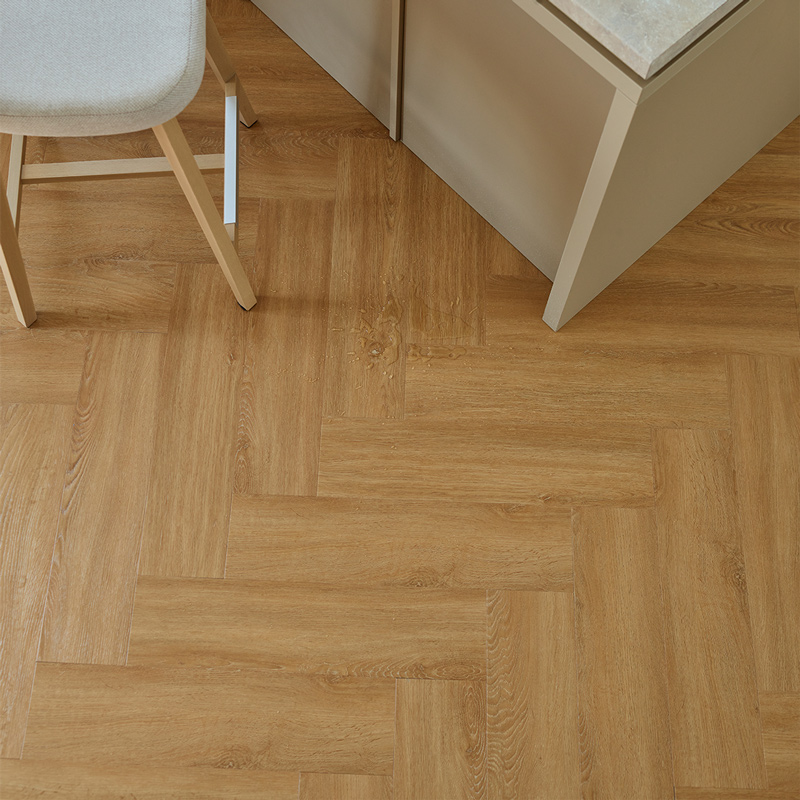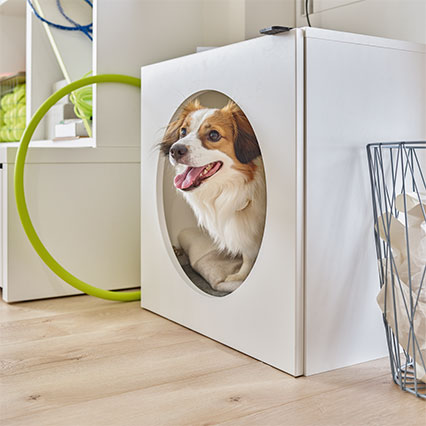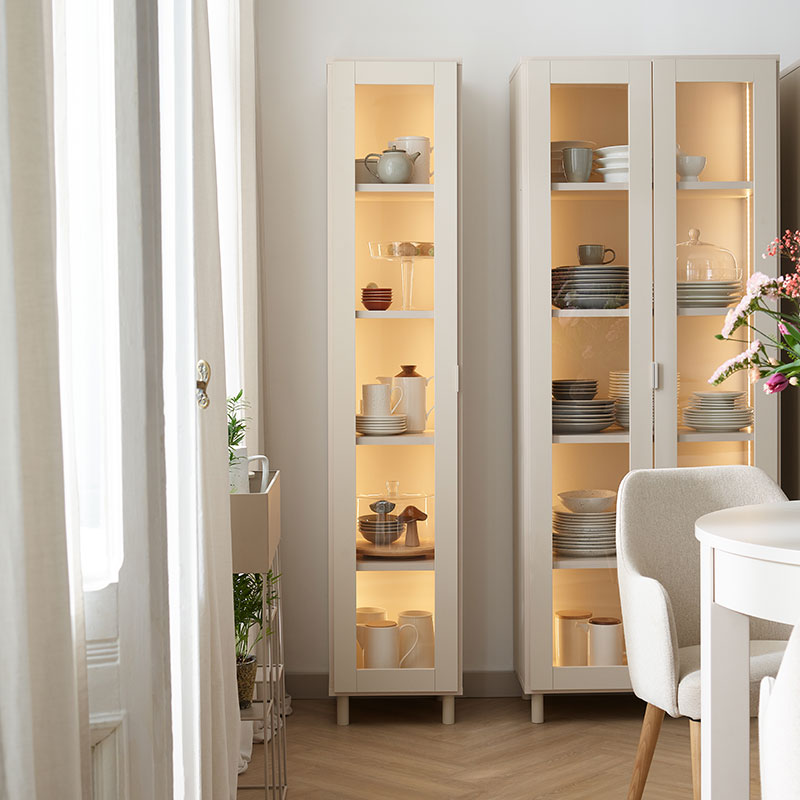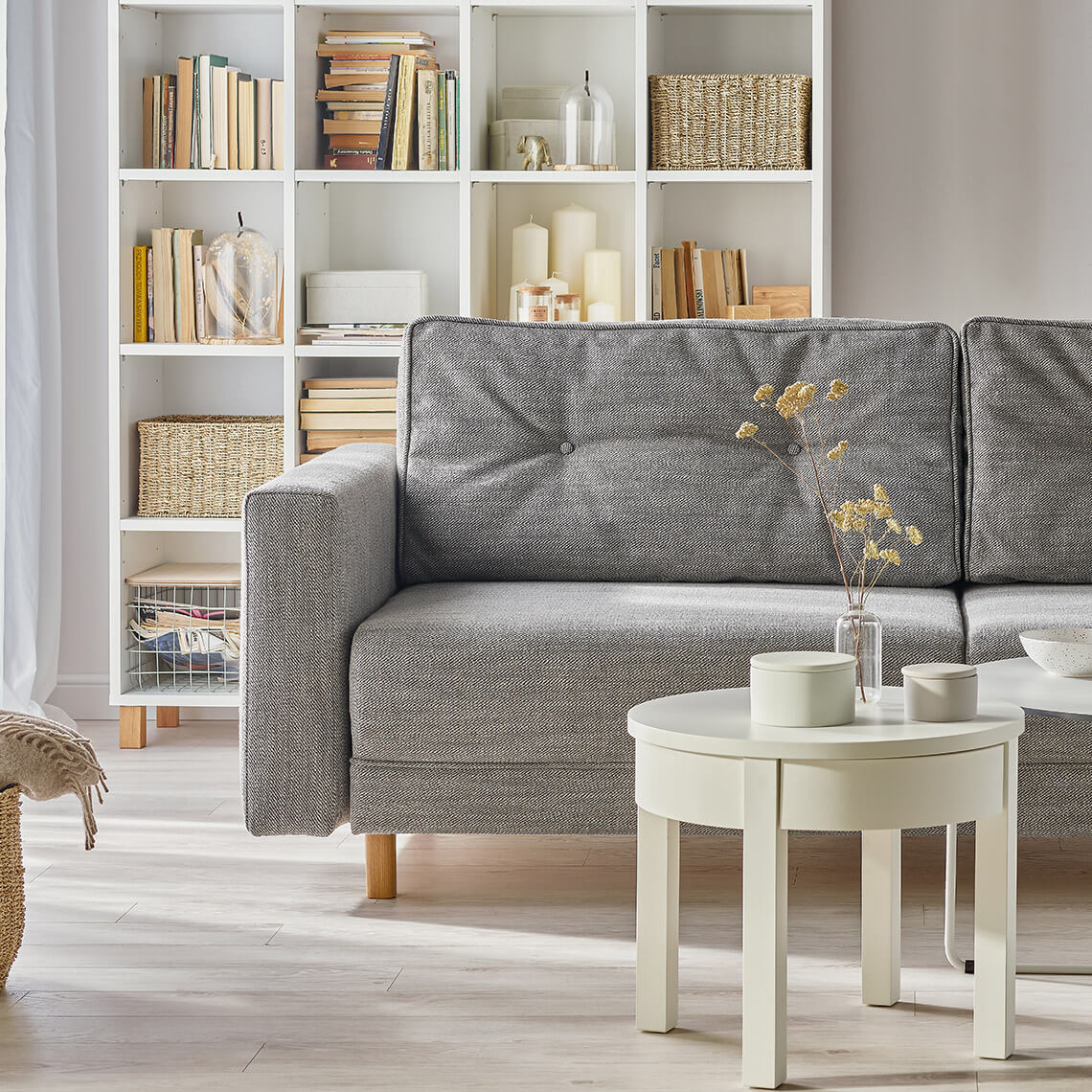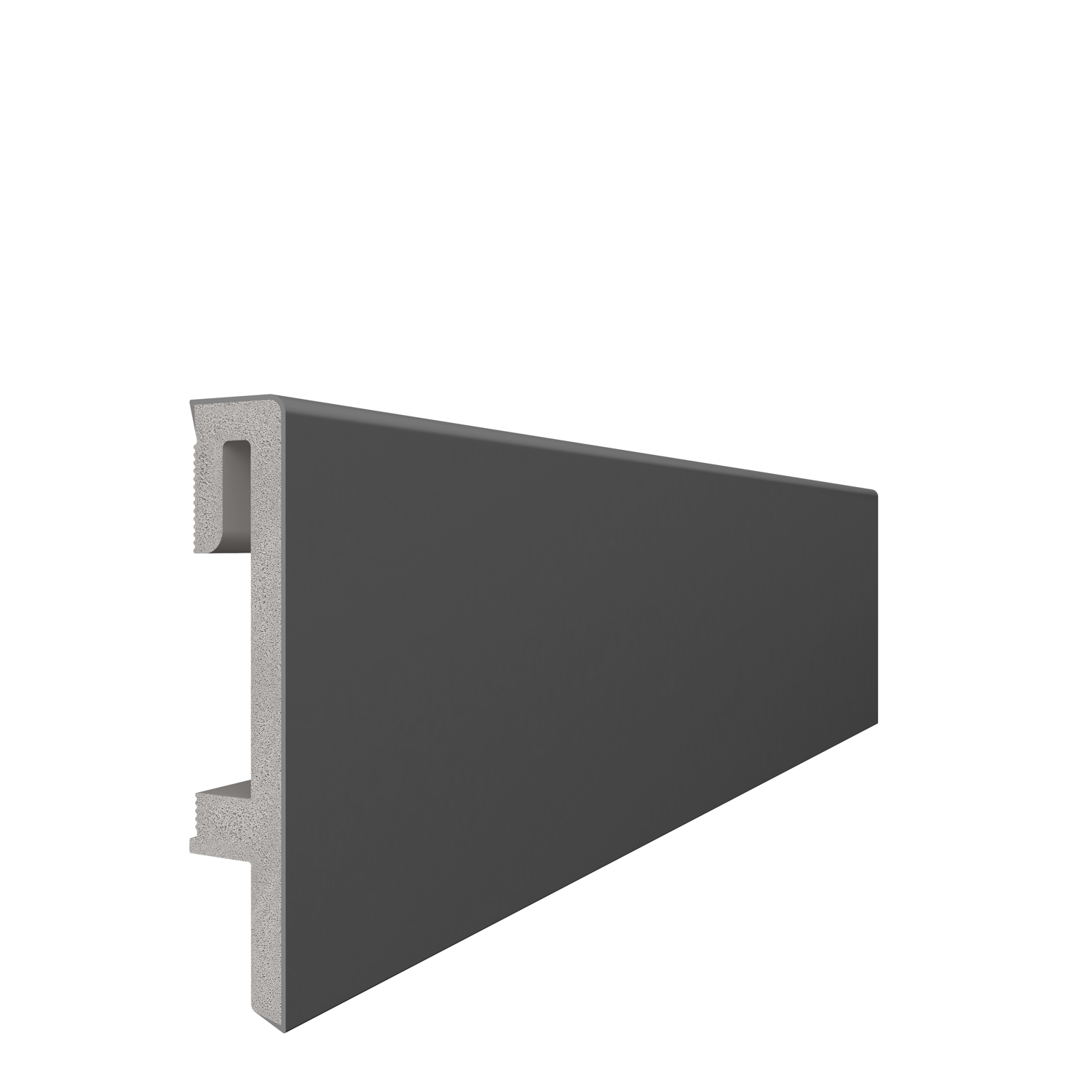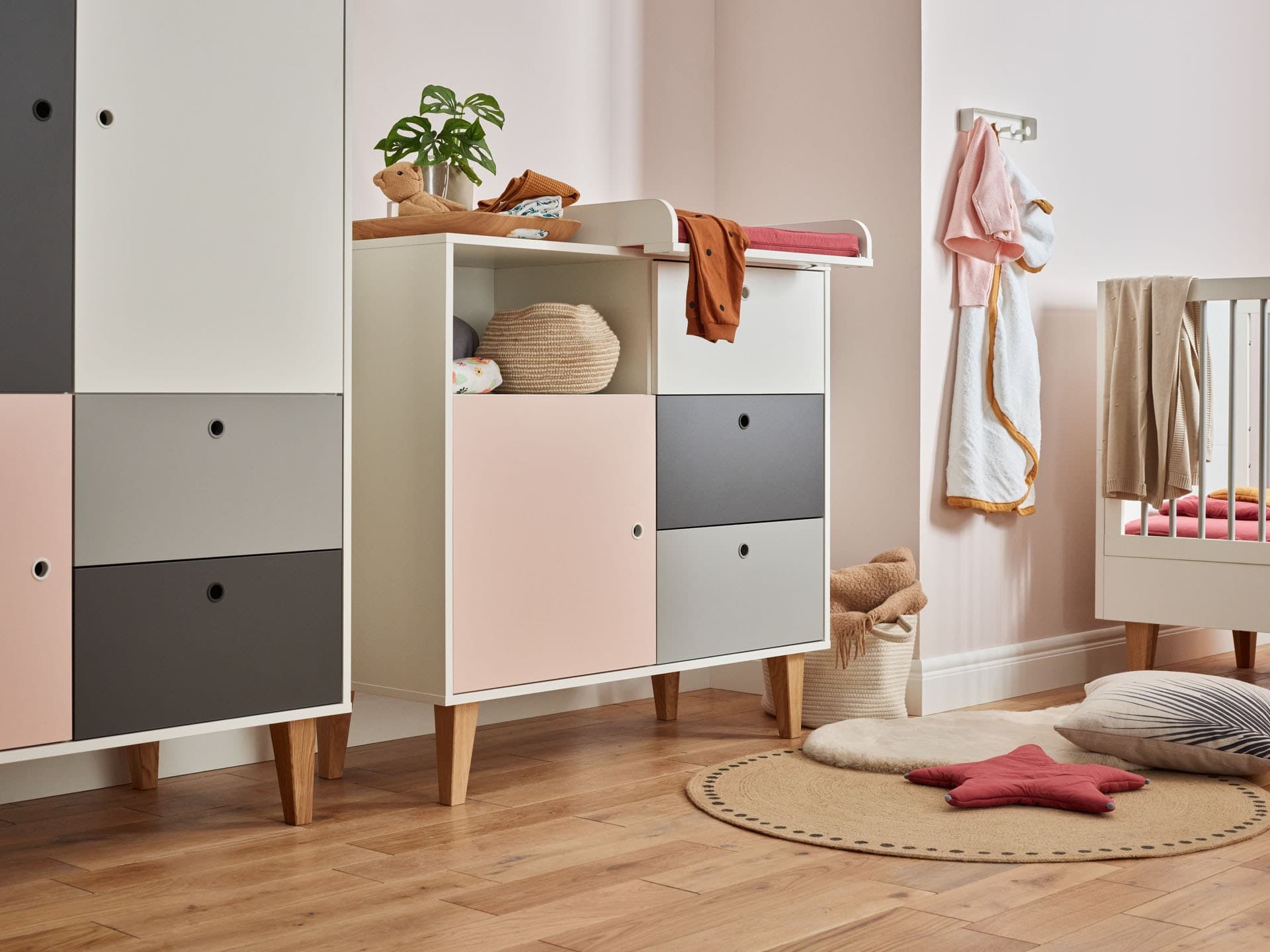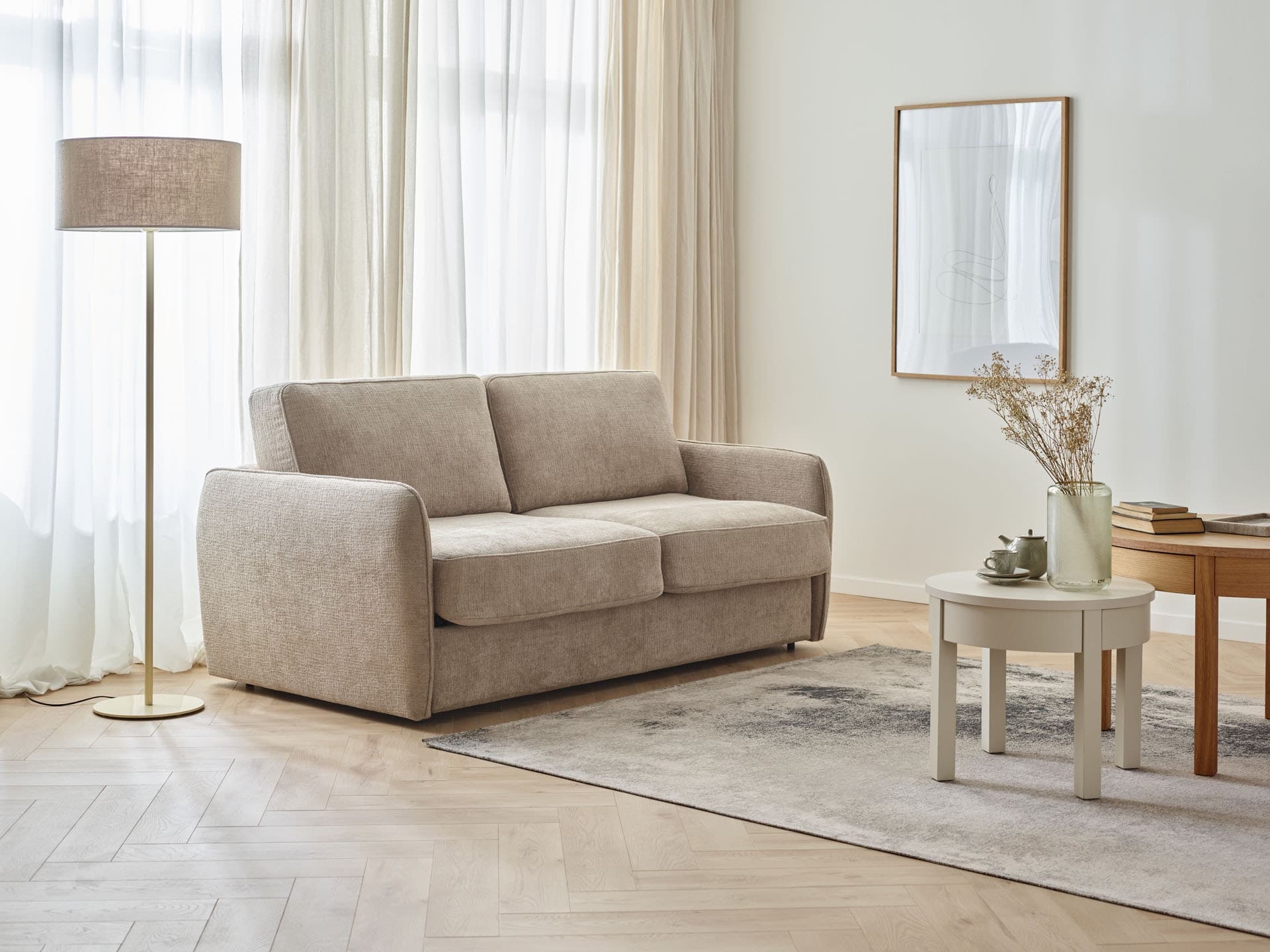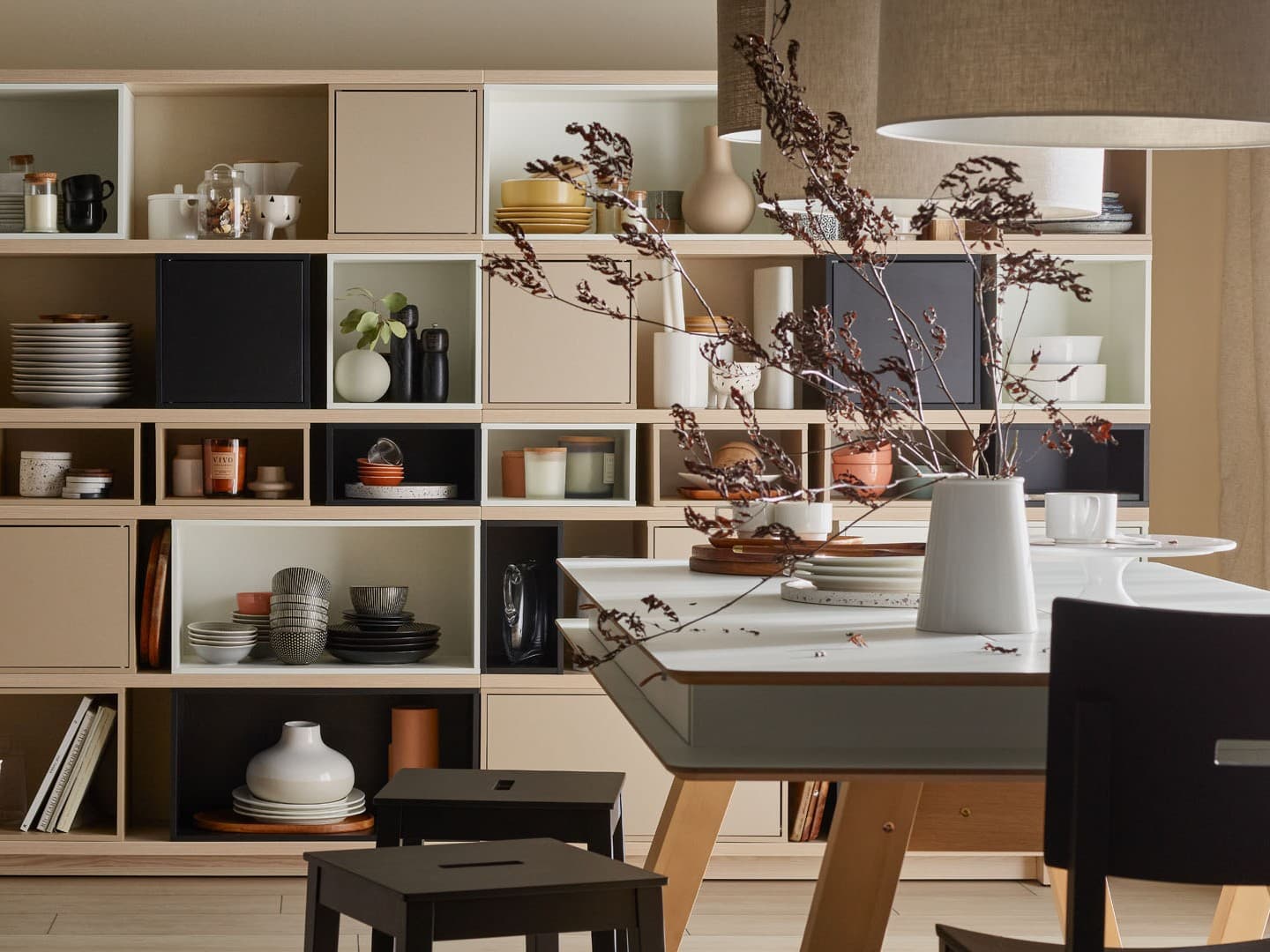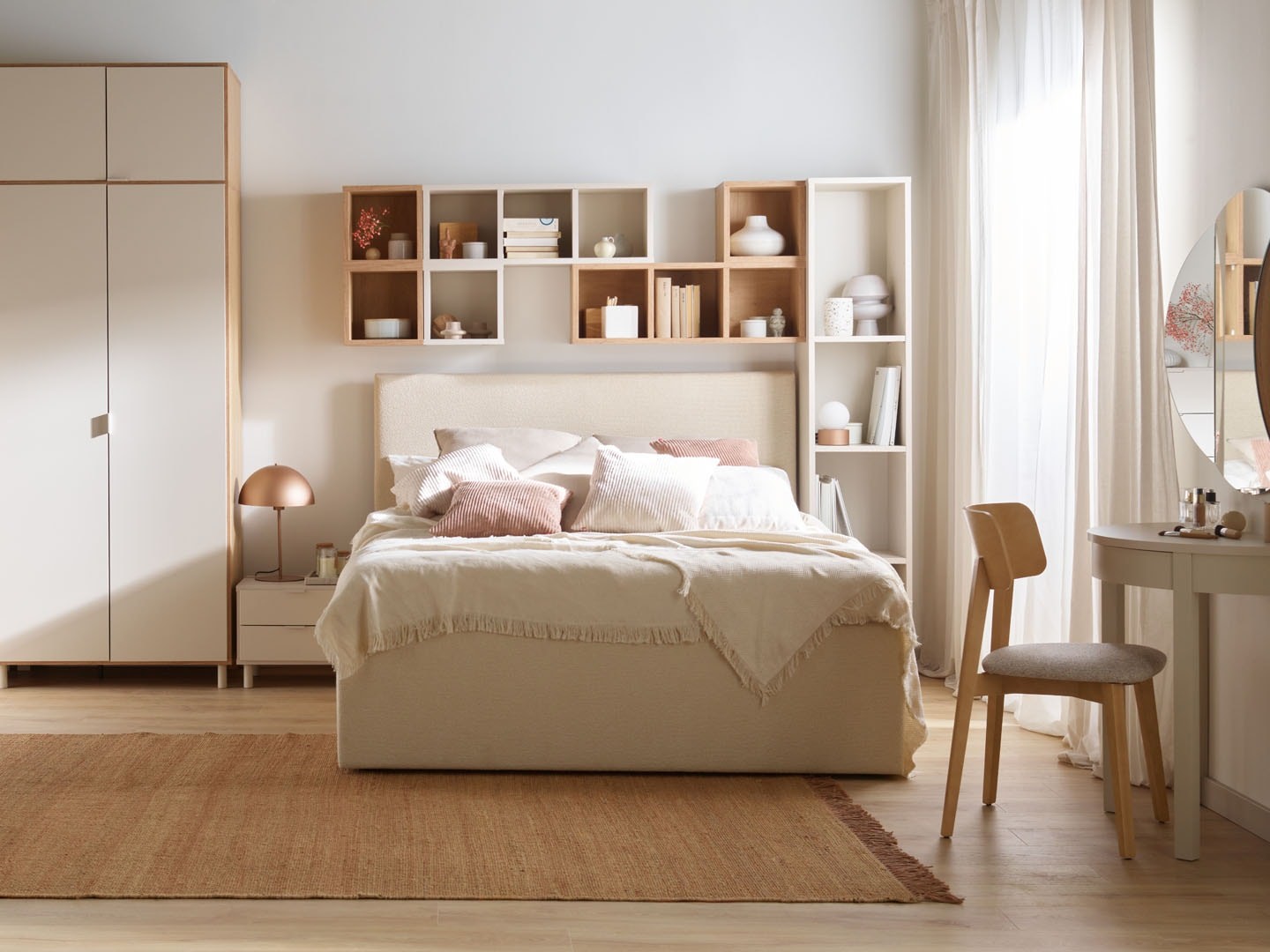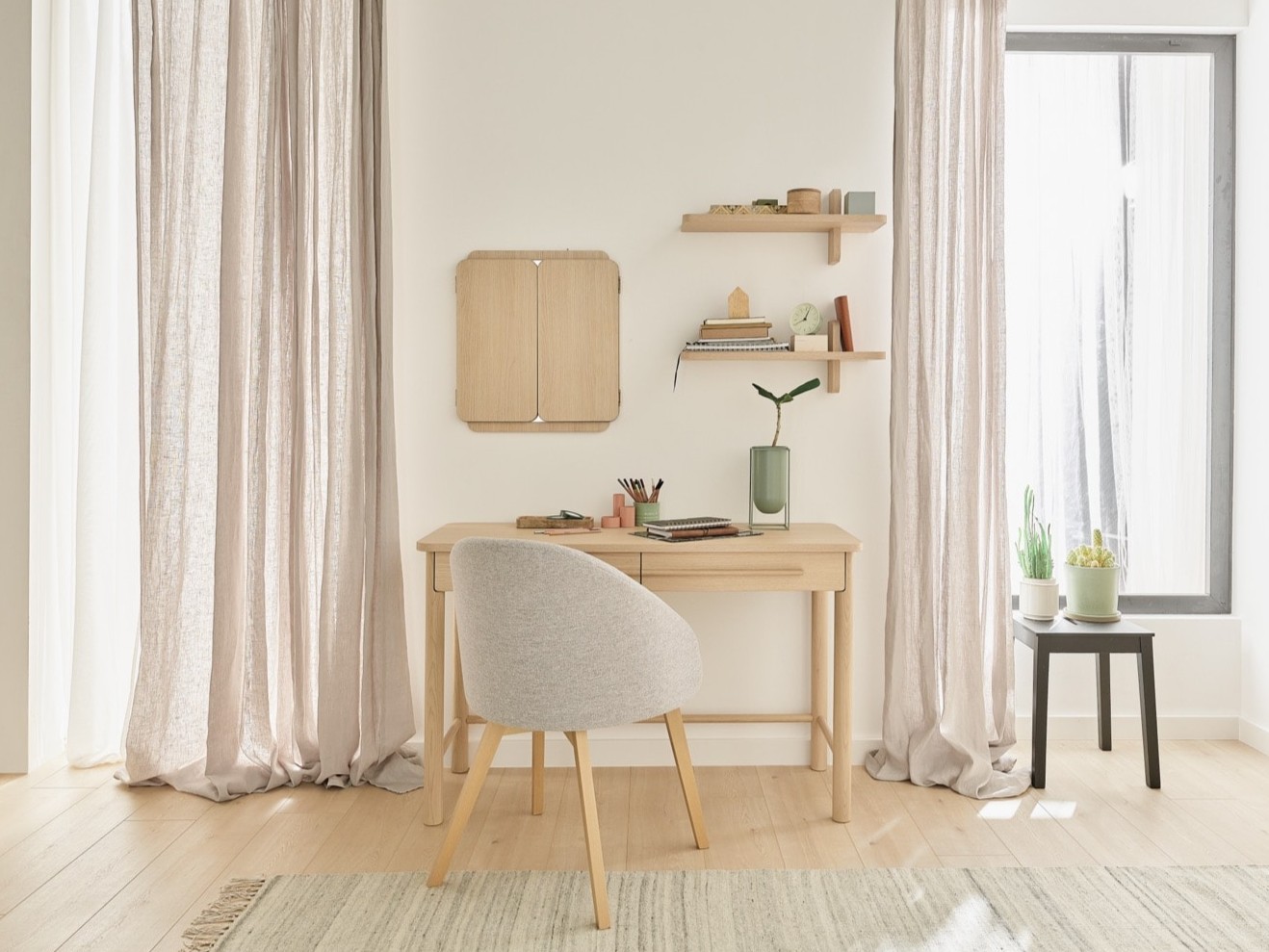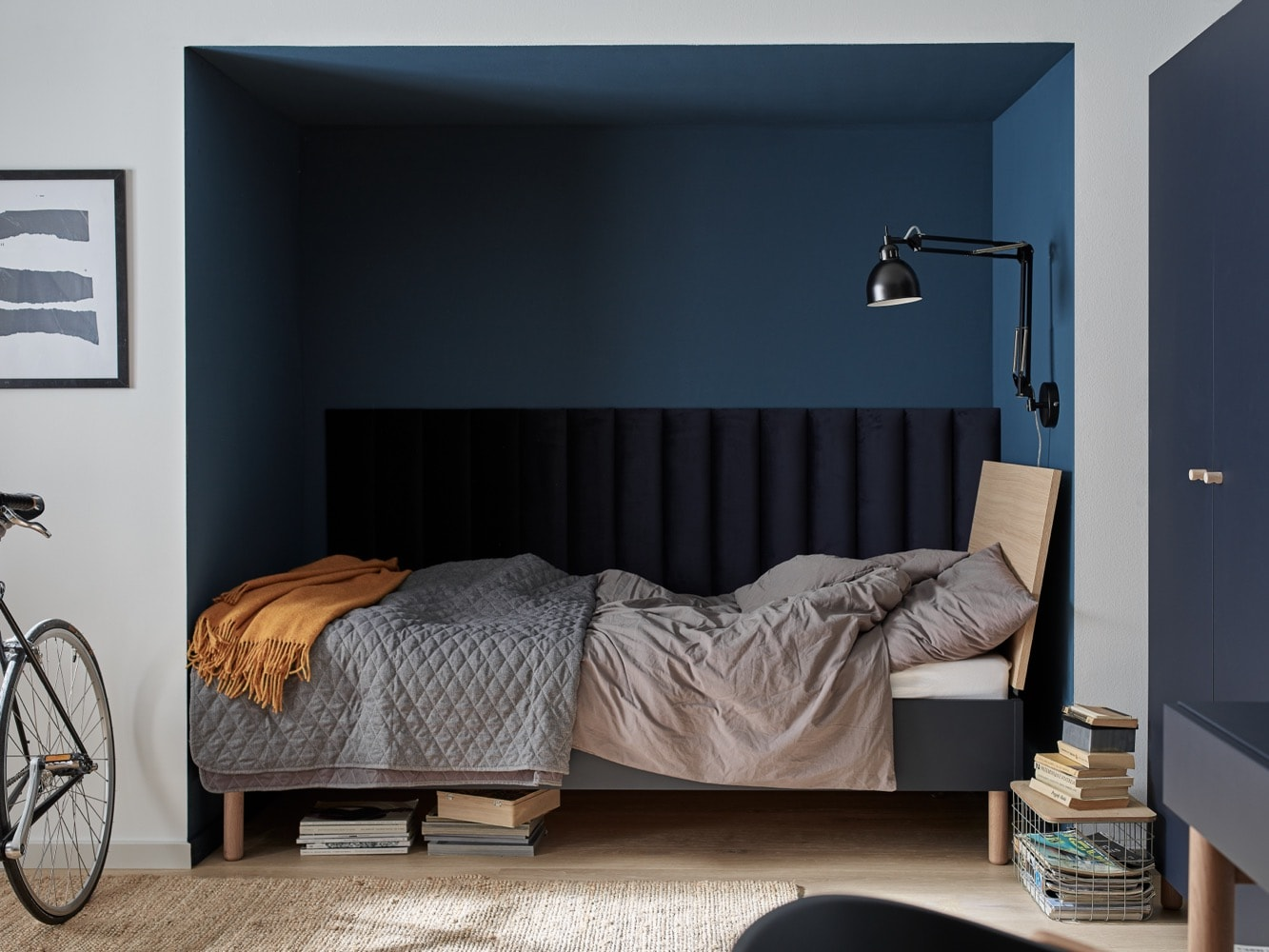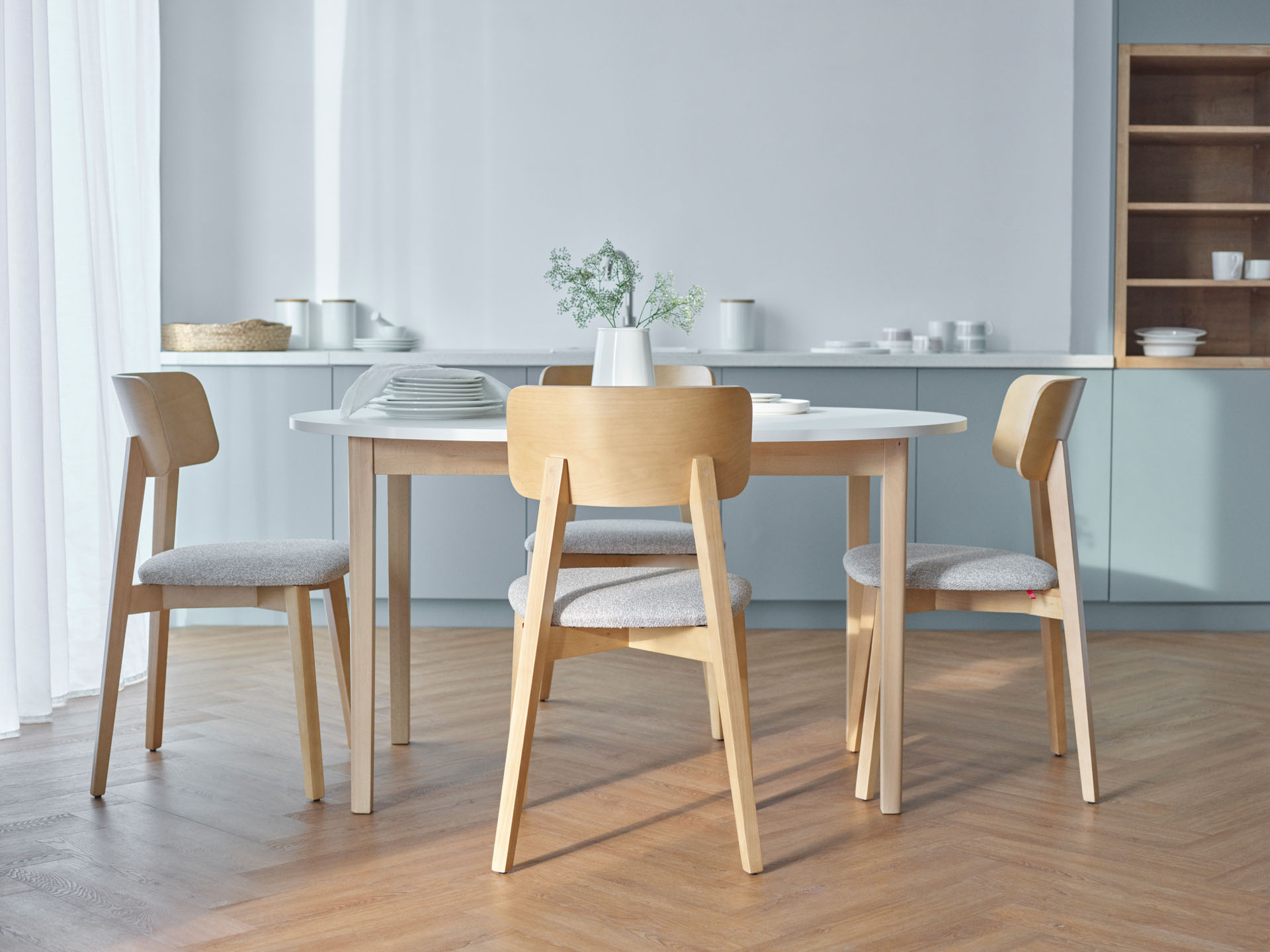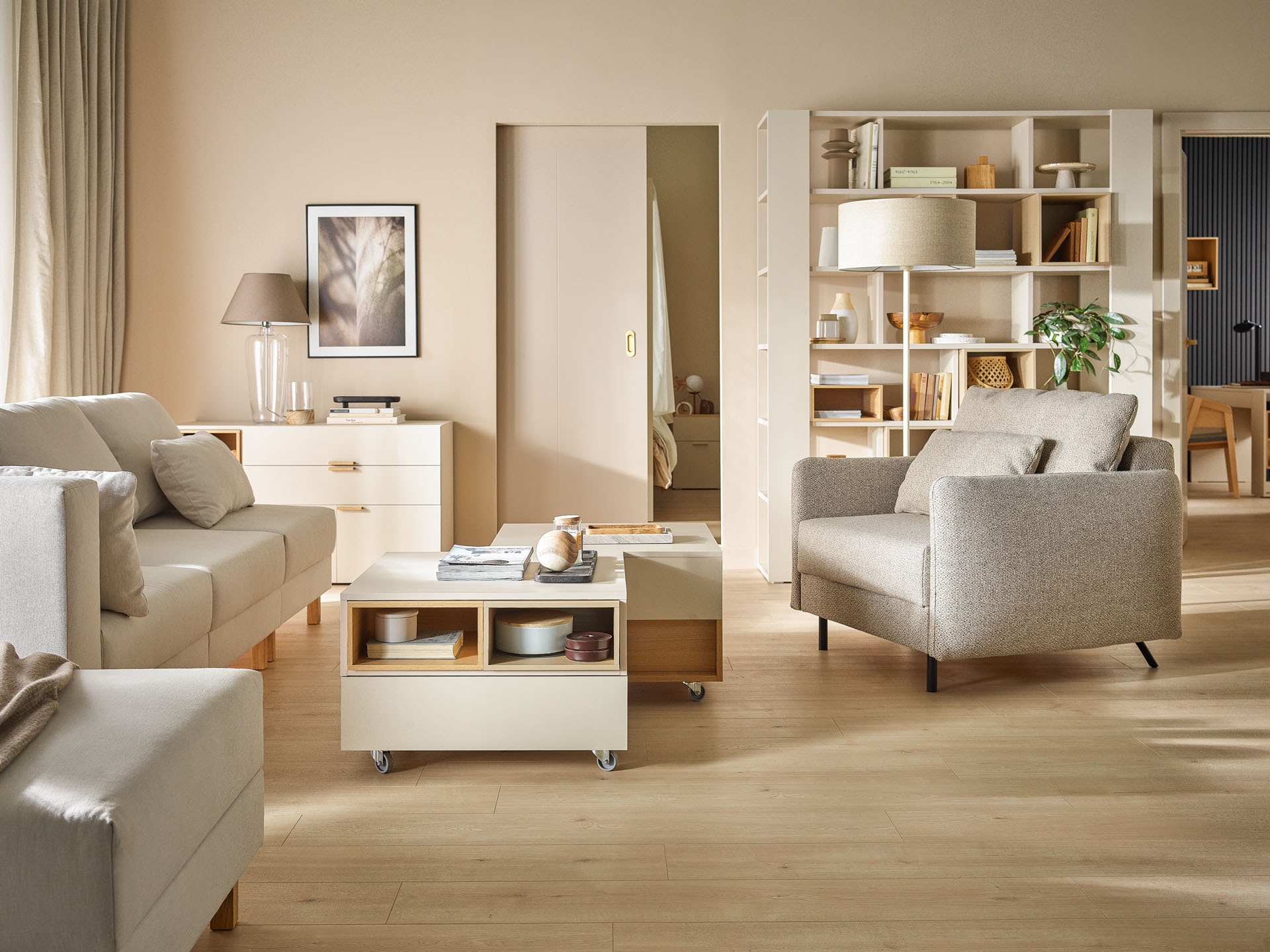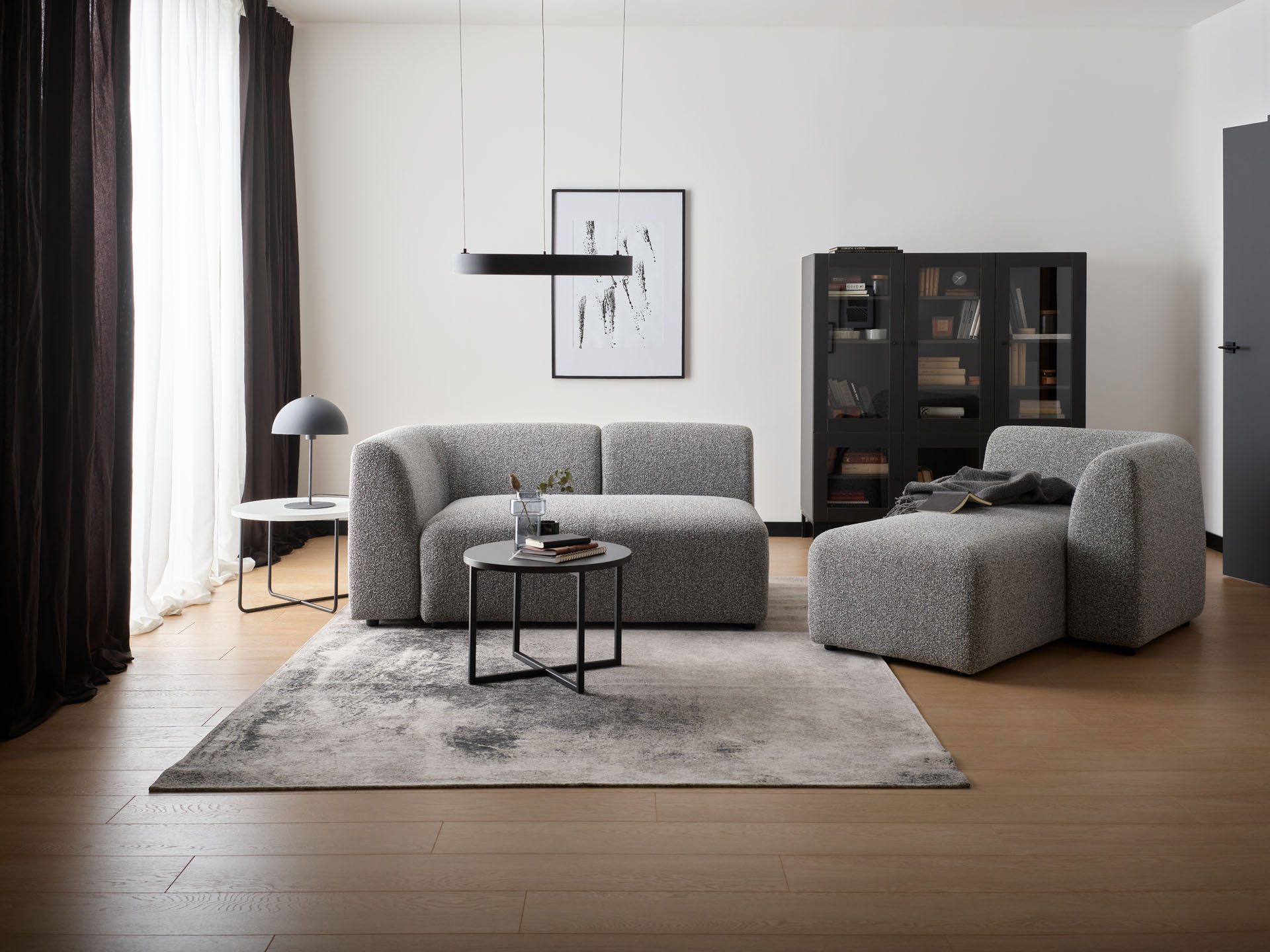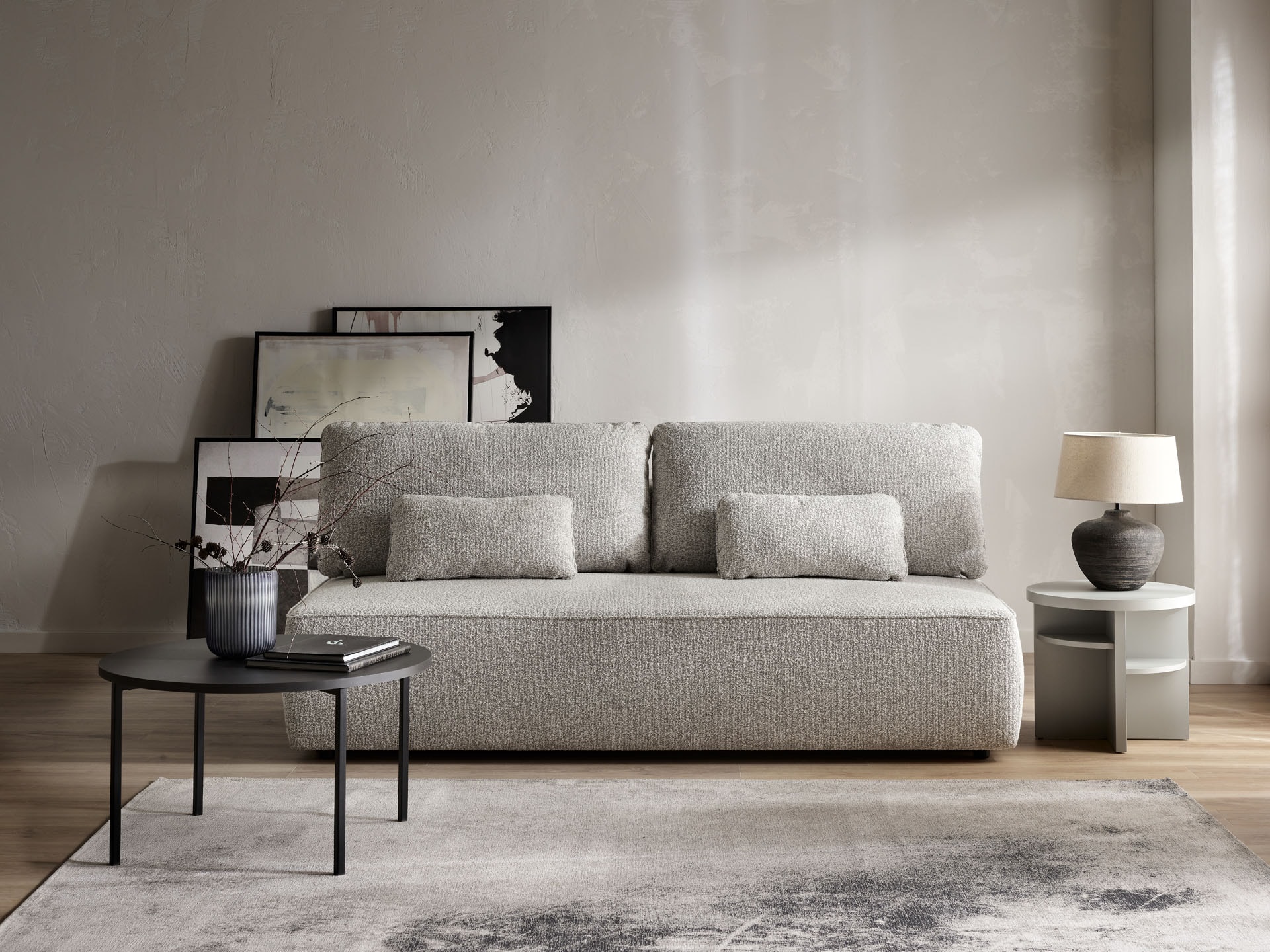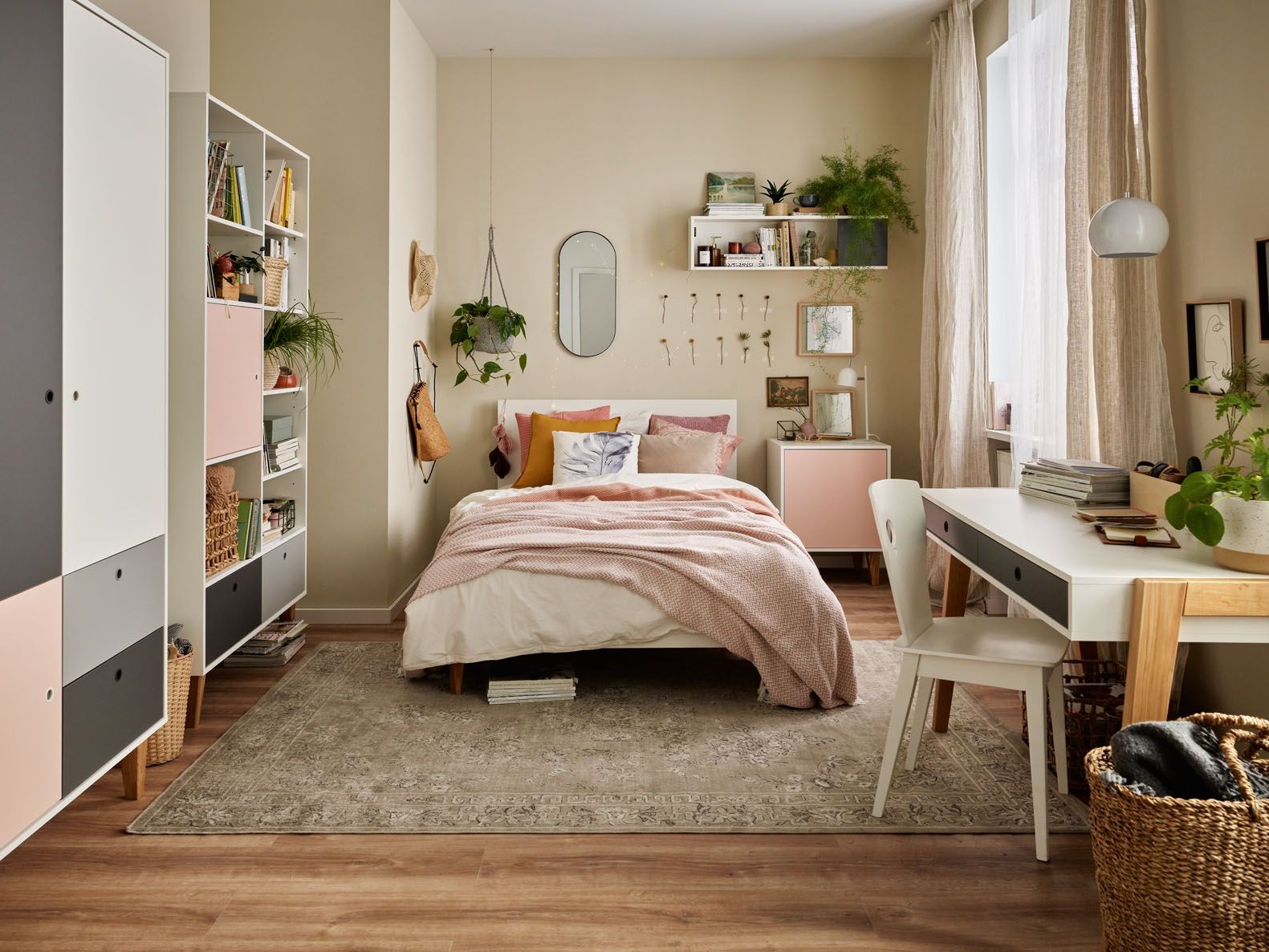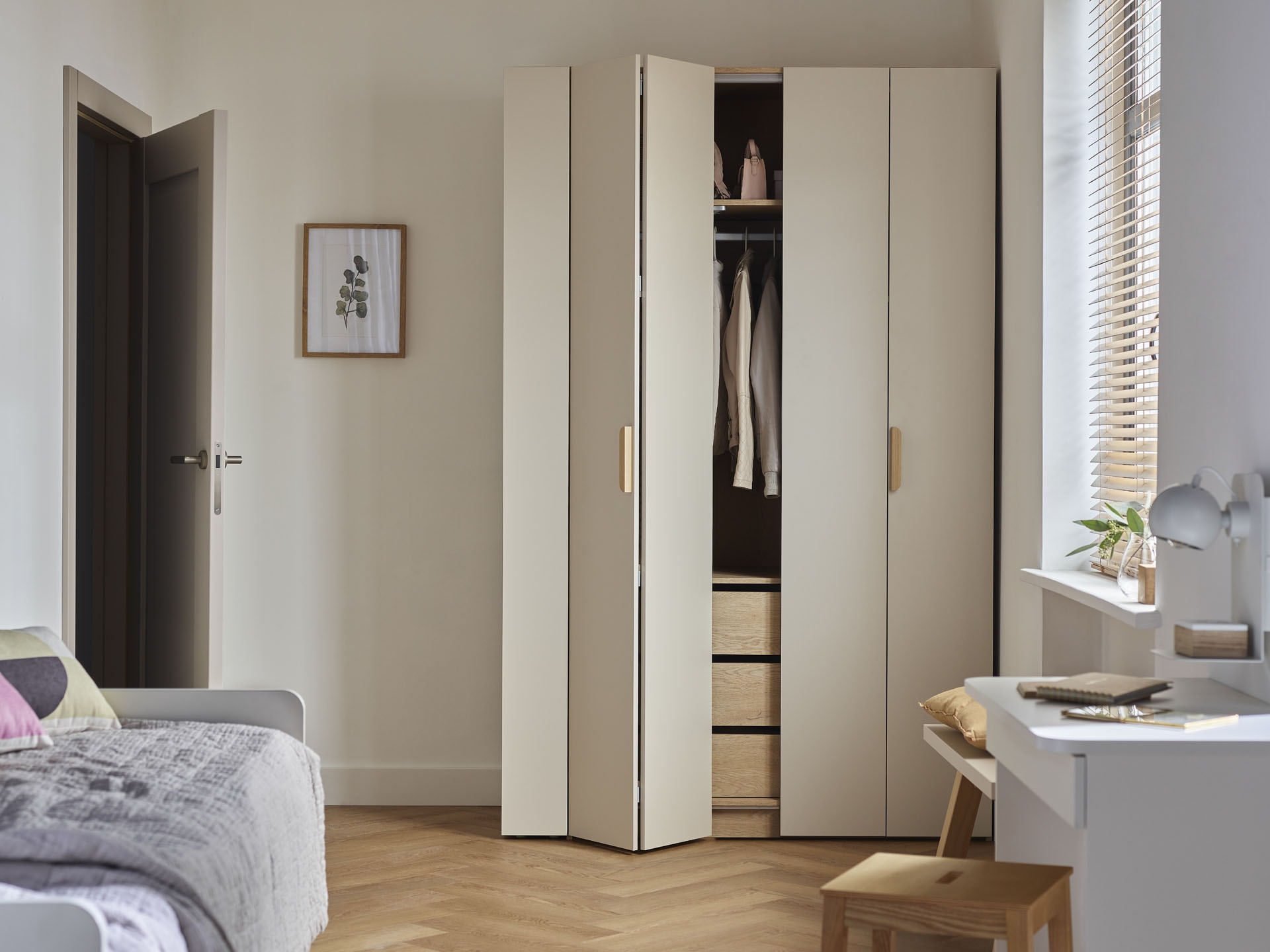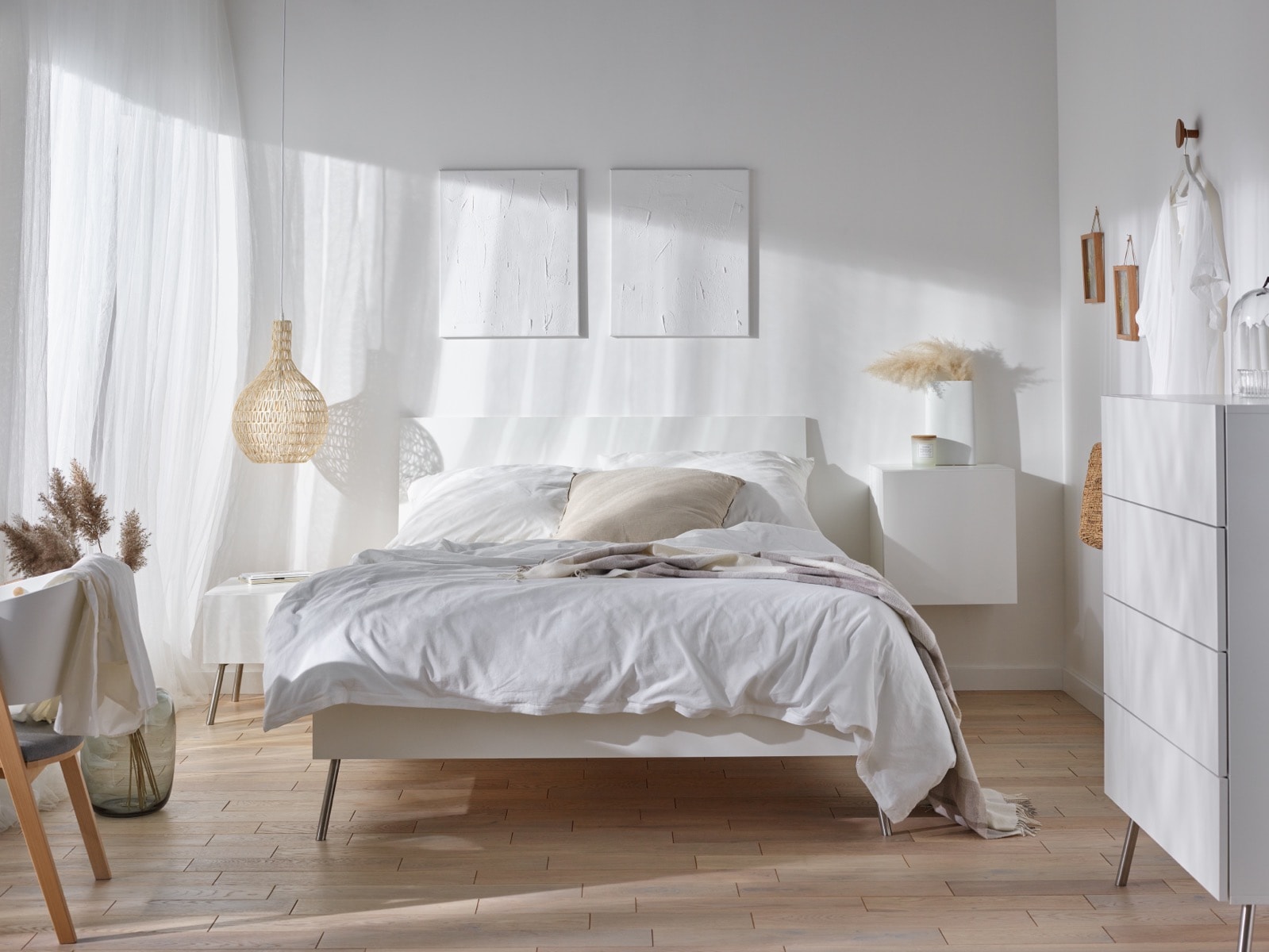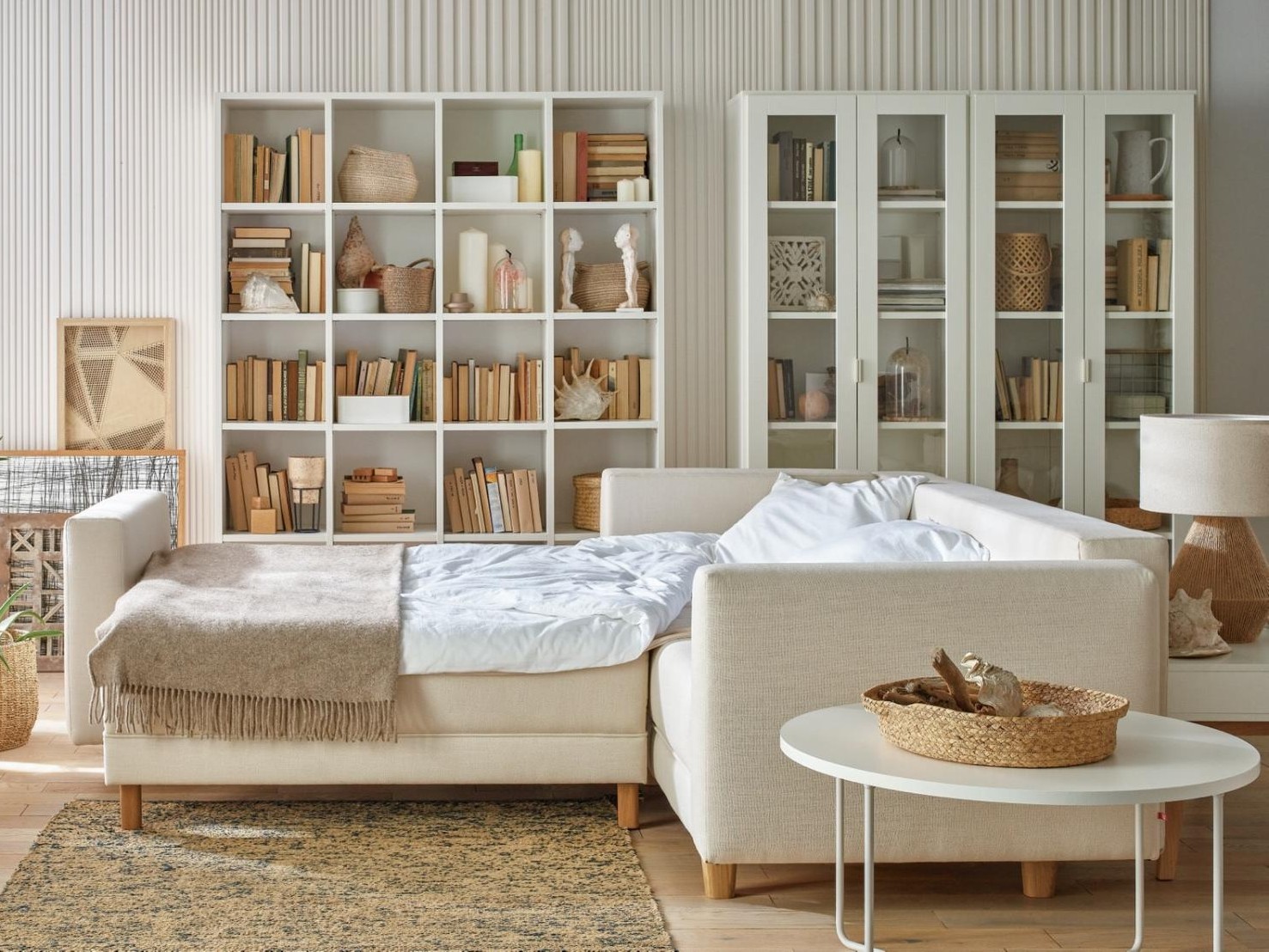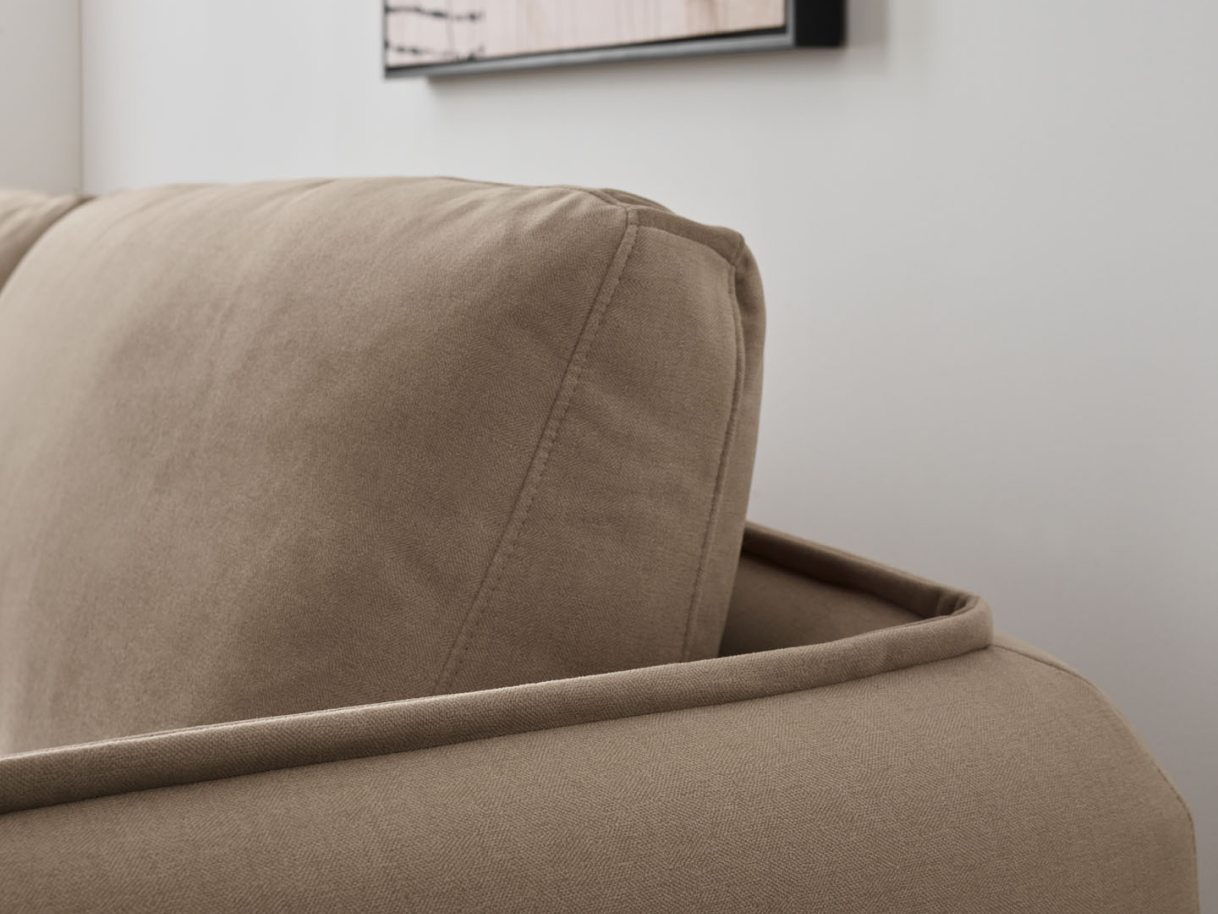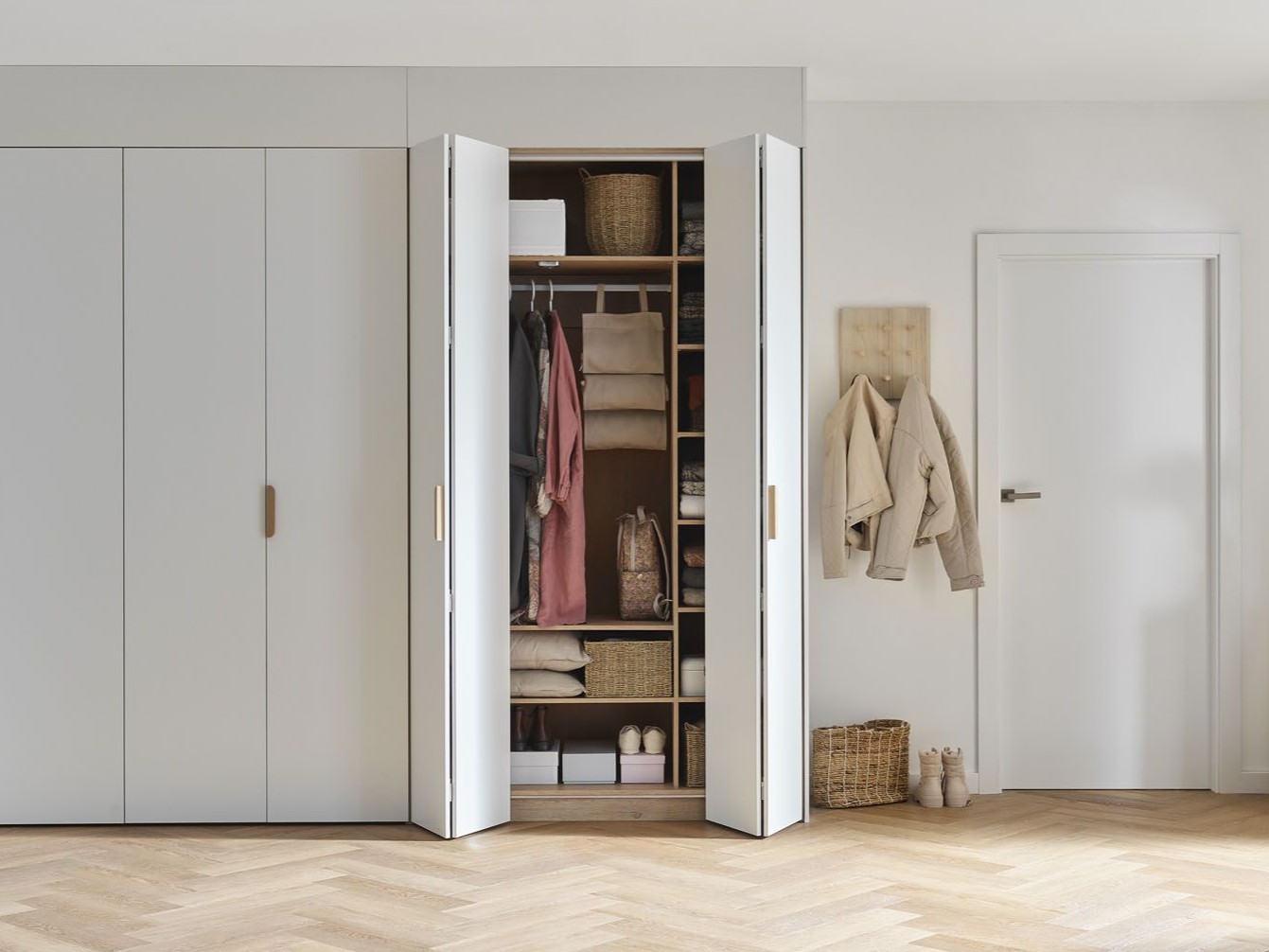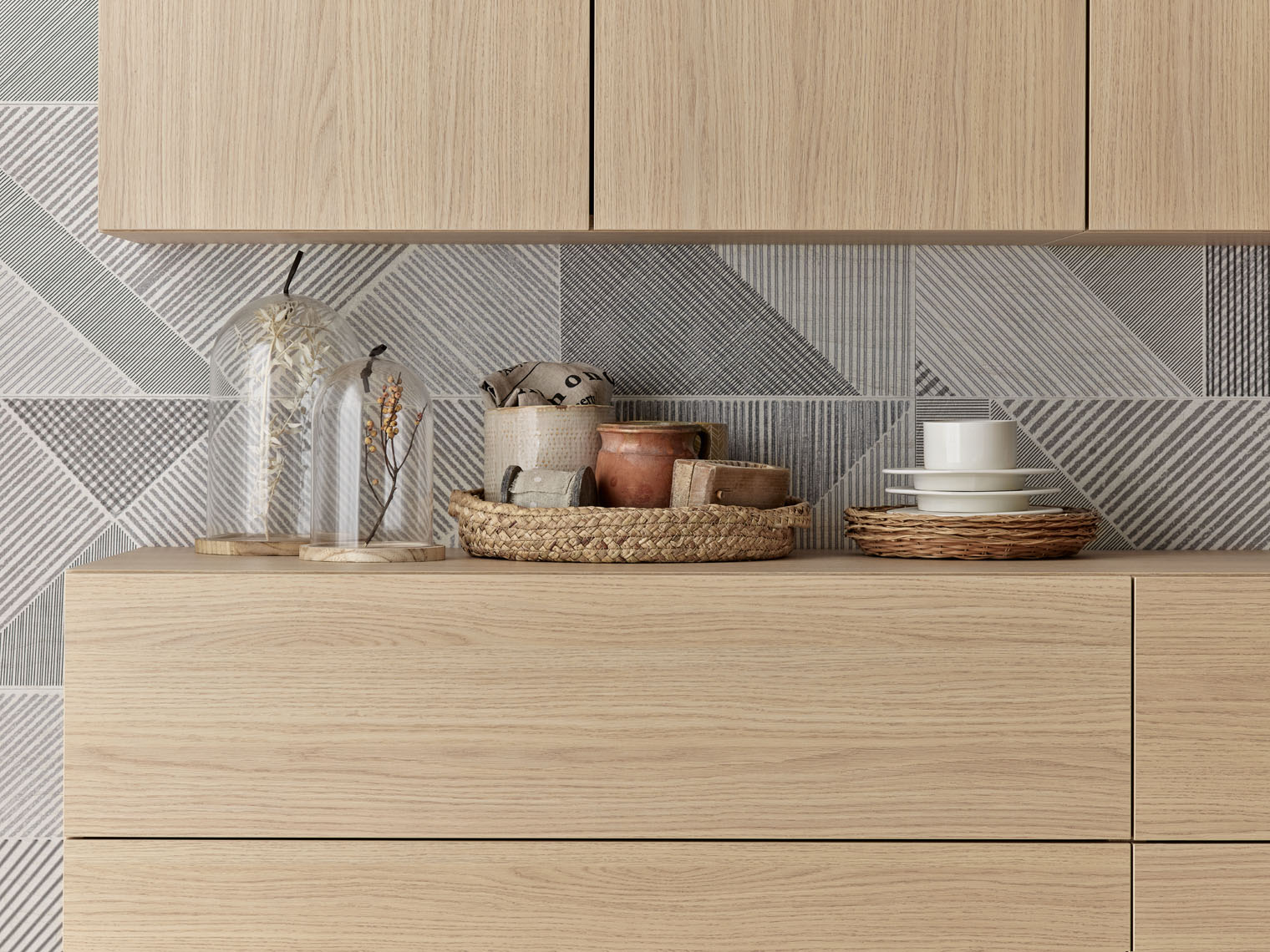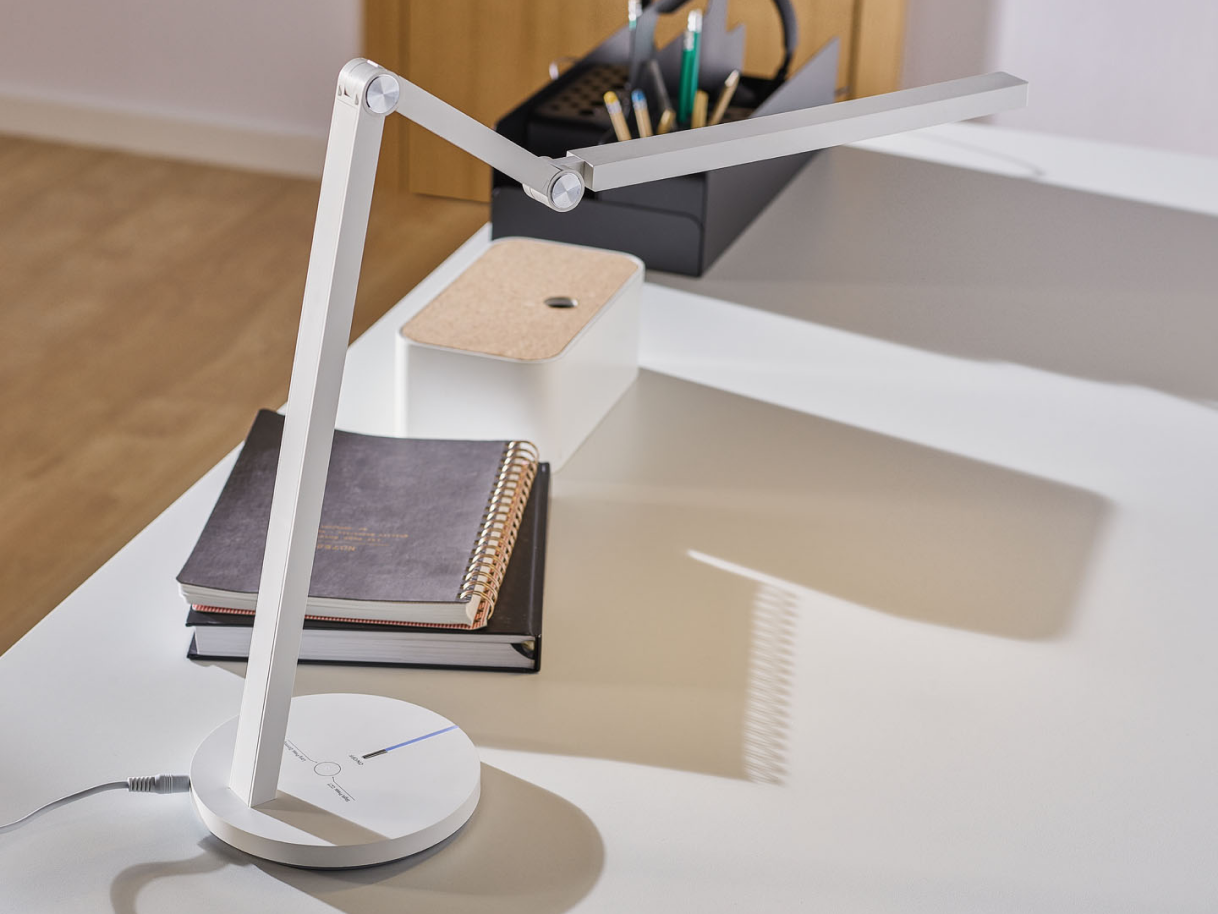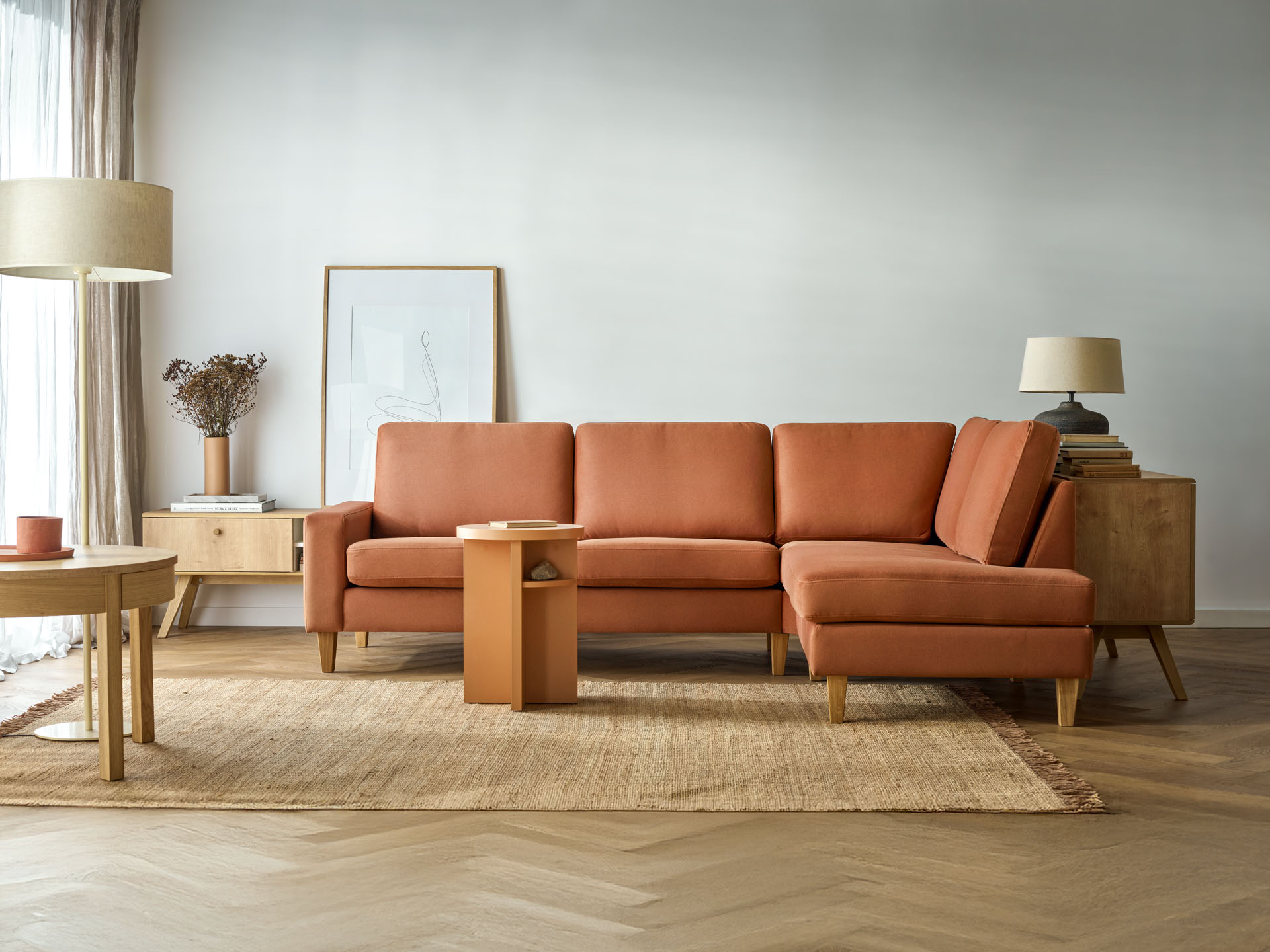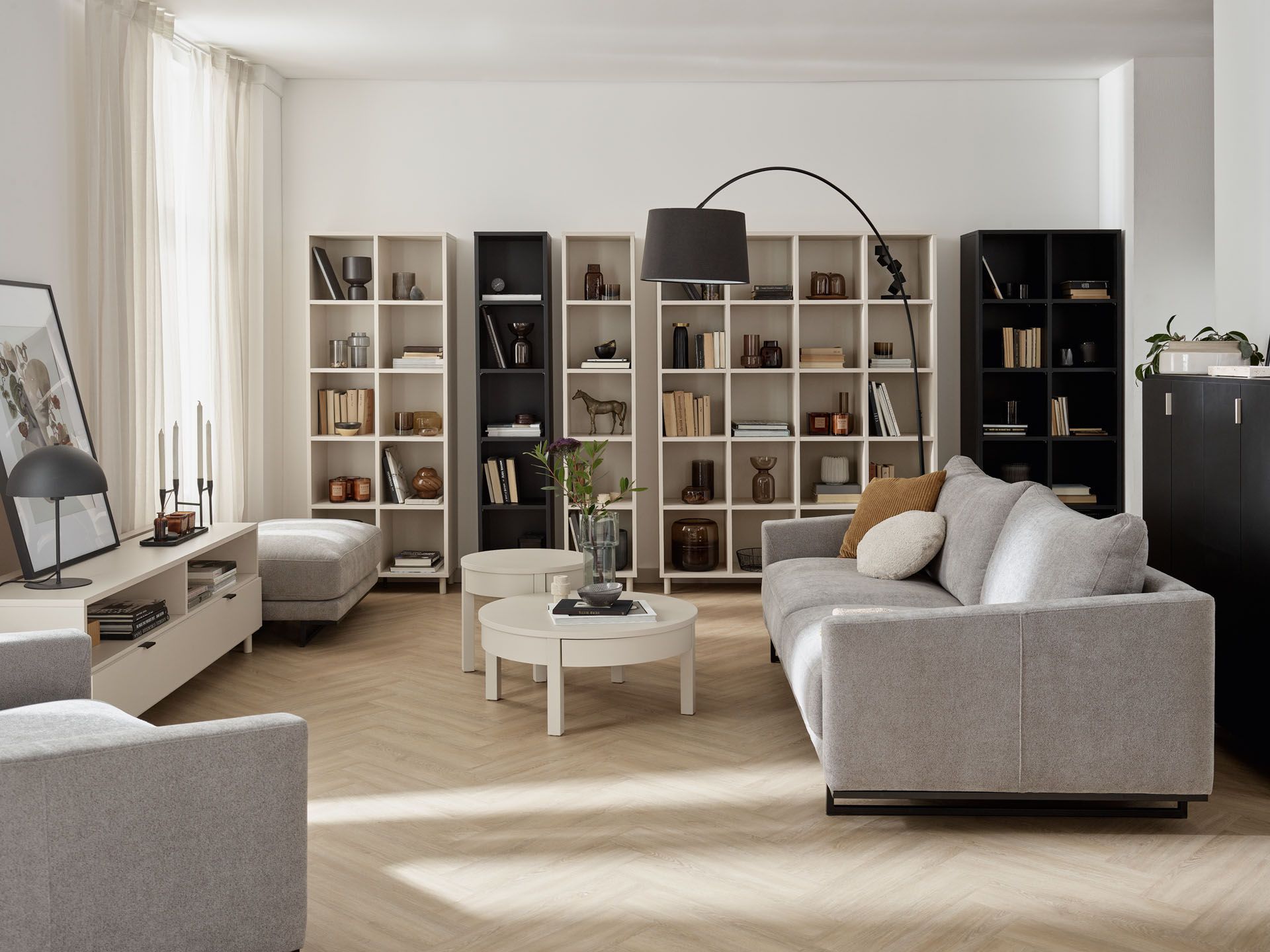How to create a pet-friendly home
a pet-friendly home? cat and dog in the flat
A dog or cat takes over the space of an entire house in a flash. We want our pets to feel comfortable and safe, while at the same time looking for ways to keep things tidy and avoid damage. How do we reconcile all this?
The right solutions for pet-friendly interiors should be considered as early as the finishing phase. However, if a four-legged dog appeared in our lives a little later, we should invite him to join us with suitably adapted furniture.
What materials are most resistant to dog and cat claws? How can you protect valuables from damage? What will help mask fur and scratches?
GOING FOR A WALK
Animal energy is most often released in the entrance hall. It is an interior that has to be ready every day for explosions of doggy joy, whether at the return of the owners or on walks.
One of the most important elements in the entrance hall will be a hardwearing and easy-care floor. Scratch-resistant vinyl in particular will resist dog claws. Dirty paw prints, which are inevitable especially on autumn and winter days, can be quickly wiped off. Rigio 's vinyl floors are also pleasantly soft - so our pet won't slip when putting on the leash. Espumo skirting boards, which are impact- and moisture-resistant, will be the ideal finish for the hallway floor. The skirting boards can also be painted, which is useful if, in a fit of joy, your pet does manage to get a bit messy.
The hallway is also the place where the dog's cot is often located. It is advisable to place it in an alcove or between pieces of furniture - in such a way as to provide your pet with its own corner, while at the same time not obstructing its view of the entrance door. Near the bed, it is a good idea to place cabinets with drawers or a post with a lockable door hung at a low height. This should prevent chewing on shoes and hats in our absence.
What about dog accessories and toys? The lead can hang on hooks, right next to our jackets and coats, while bags, balls and treats will find their place in special containers. Such a solution will work especially well in a small hallway, facilitating good organisation even in a small space.
A CAT IN THE FLAT, OR A CLAW-PROOF LIVING ROOM
From the hallway, we move on to the living room - a place that is often a claw battlefield for cat owners. What can be done to prevent the feline from scratching the furniture?
The solution may be to create a separate corner for him. Arrange it in such a way that the cat can always keep an eye on the whole room. A special pet cupboard is particularly useful. By covering it with a soft blanket or cushion and placing it on a small raised area, you can give your cat a comfortable alternative to a sofa or armchair. A scratching post can be placed right next to the cat's little kingdom, and its favourite toys can be hung on the hooks.
However, cats are independent animals that often go against our will. If you know your purr-fect cat well enough to know that such ideas are doomed to failure in advance, you will be left with choosing the right furniture. In the living room, sofas and sofas upholstered in fabric with a strong, compact and dense weave work best. Even if our little one manages to get into it, we can easily repair the damage ourselves. All it takes is a tailor's needle to pull back the thread pulled out by the cat.
Upholstery made from fabrics that do not have the traditional weave of threads that our cat could pull up - especially flocked fabrics or fabrics with pile. Durable and easy-to-clean velour in particular will work well.
Living with a cat also means a constant battle with the hair it leaves behind. In this case, it may also be a good idea to match the colour of the upholstery to the cat's coat - this way, the hair will not be so visible. In addition, we can also cover the furniture with patterned blankets.

In the living room, let's also take care to protect items that are precious to us from the cat. Decorative crockery, mementos or figurines may be dropped during one of your escapades along the path of chests of drawers and bookcases. Put them in a glass-fronted display case, where they will be safe from the cat's paws and have a properly displayed place. Also hide cables and wires from the four-legged guests in the living room. Estilo skirting boards with a special compartment and furniture with cable trays and grommets will help. The RTV cabinet from the Simple collection even has a special gutter with a flap, where cables will be safely hidden from the cats' teeth and claws.
PETS WANT TO SLEEP TOO
What if our dog or cat loves to peek into the bedroom too? First of all, let's make sure it's easy to remove the traces it leaves behind and keep our cosy kingdom of relaxation in good order. It's best to equip it with furniture on legs, under which you can easily vacuum up hair and fur. The oak-finished Nature furniture in particular is a good choice, as it has a very light appearance and also offers plenty of storage space for clothes and bedding.
Protection against dog claws and cat curiosity is also useful here. The former can be dealt with by covering the bedroom floor with flooring of a suitable abrasion class (AC4 or AC3) or with natural Skandinavien boards made of hard and durable oak. A smart solution can be a light-coloured floor, where any possible scratches will be less visible.
Curiosity is tamed by hanging shelves that the cat will find difficult to jump onto. Small items we use every day, such as make-up, can also be hidden under the folding mirror of a cleverly designed dressing table.
If our pet will be free to use the bed, let's cover it with a wide microfibre bedspread. This will easily remove any stains and hair. However, if you don't want your pet to lounge in the bedroom in your absence, it's a good idea to install a particle board door. They are heavier, so it will be more difficult for our pets to break in - even if they manage to jump on the handle.
SAFETY FIRST
As well as hiding dangerous items, especially chemicals and medicines, let's check all our house flowers and plants. Cats are often happy to nibble on green stems, but some of these can be poisonous to them. Monstera, aloe vera, ivy, any species of lily, some ferns, bamboo and violets are particularly dangerous.
Nor should we believe the legends about cats always falling on all fours and having seven lives. In fact, a fall from any floor can be life-threatening for our pet. This is why it is so important to keep an eye on the windows, which should be closed or only unsealed in our absence. If you want a constant supply of fresh air, you can fit special nets to stop your pet from suddenly escaping. Don't forget about this protection when arranging your balcony.

